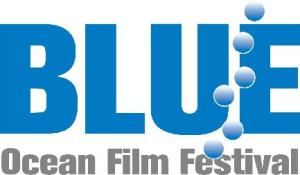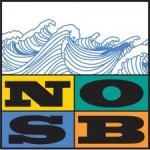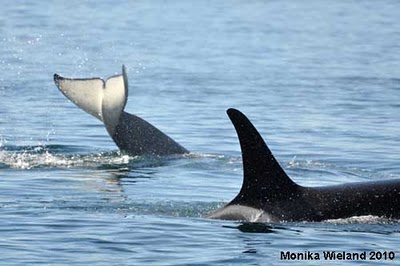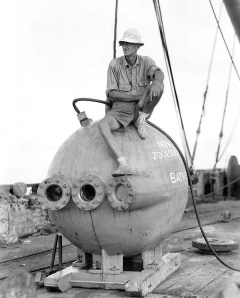Bartholomeu Diaz was a Portuguese navigator who was the first person to sail around the Cape of Good Hope. His flotilla of three ships are thought to have rounded the tip of Africa the first week of February in 1488. He was sent by Prince John (eventually King) to explore the west coast of Africa south of fifteen degrees latitude in an effort to understand how Africa and India are linked.
What children have to say about marine debris
I just think this review of what children from New York City have to say about beach pollution aka marine debris is too “right on” not to share. These quotes come directly from an article on the Ocean Conservancy’s website. Check out the entire article for some wonderful crayola images the kids did too!
Fourth-graders in New York City conducted cleanups at a local beach and tallied every item they found on Ocean Conservancy’s data card, an experience shared by hundreds of thousands of people around the world every year during Ocean Conservancy’s International Coastal Cleanup.
The young citizen scientists learned about the myriad ways marine debris threatens ocean health, and created graphs to show the sources of these man-made items.
They shared their findings with us, and we’d like to share them with you. Here are just a few of their observations, presented just as they’ve written them:
Who owns the oceans?
We all own the oceans … no, wait! No one owns the oceans. Sometimes it is very confusing to answer this question.
Since the third United Nations Convention on the Law of the Sea the jurisdictions of the oceans are known as this:
- 0-3 nautical miles from the coastline of the country is considered a countries’ territorial seas and are subject to the rules of the country. Invading these waters can be seen as attack.
- In the United States 0-12 nautical miles is subject to individual state laws.
- Adjacent to the 12 nautical miles and out to 200 nautical miles is the Exclusive Economic Zone which gives states and/or a countries the “right to explore and exploit, and the responsibility to conserve and manage, the living and non-living resources.”
For more information click here.
10 questions with a marine biologist
Here are some question and answers with Professor Jeffrey Levinton of Stony Brook University, Stony Brook, NY. He is a Distinguished Professor of Ecology and Evolution at Stony Brook University. He has been lucky to be able to teach college students for many years at the State University of New York at Stony Brook, which has a Marine Biology Major. He greatly enjoy seeing students learn about the marine environment and sometimes decide to embark on a career in marine biology.
In case you are interested in the field here is what you are in for:
1. What, in your opinion, are the disadvantages of being a Marine Biologist?
Don’t see any real disadvantages at all. Can’t complain about freedom (a fair amount), opportunities (lots in everything from government to teaching to popular book writing)
2. What, in your opinion, are the advantages of being a Marine Biologist?
Advantages include doing what you love to do; travel, often to fascinating and lovely places; interactions with interesting folks.
3. If you could do it all over again, would you have chosen this field? Why?
Maybe, but maybe not. Who knows why? Life is complex. I started wanting to be a writer, but found that I loved geology and majored in this in college and in graduate school. It was in graduate school that marine biology took over as my primary interest.
4. What do you find the most satisfying part of this field?
Following your interests as a researcher, teaching students.
5. What are some related occupations to the field of Marine Biology?
Oceanographer, Environmental Manager, Molecular Biologist
6. How did you first get interested in marine biology?
This is hard to say but I am pretty sure that it was seeing Jacques Cousteau‘s famous film “The Silent World.” My father took me to downtown NY City to the Paris Theater to see this movie, which was then regarded as a great artistic film, directed by the great Lous Malle and winning an Academy Award. The coral reef was enthralling and I was hooked. Incidentally, I have to say that I am pretty cross with those marine biologists who dump upon Cousteau and see him as an opportunist who took advantage of scientists and stole center stage; he coinvented SCUBA and has inspired more people in this world to love marine biology than any 100 other marine biologists. As a boy he wrapped an above-water camera in a clear bag and shot many underwater pictures. His obsession has been to our great benefit.
7. What does a high school student need to do to become a marine biologist?
These days the college route is essential, but don’t feel that you have to go to a school that specializes in marine biology. Find a college that is first rate in science but has good humanities and communications training as well. In the summer of your junior year or senior year make SURE that you get a summer job or take a course in a marine lab (see marine lab links and internships/ summer course links on the main page of the MBWEB URL). This will do more for you than any 5 marine biology courses in college. After college your marine biology education will be acquired in graduate school. Another good strategy is to be a biology major in a college that has marine biologists doing research. If you wish to become a technician a Masters degree will do, but a Ph.D. is essential these days to become an independent scholar who can supervise research projects be a well-placed official in an environmental protection agency, etc.
A masters degree will usually take about 2 years to complete. It is important to choose a university where the program has substance. You want to pick up a core education in marine biology, but, depending upon your career goals, you may want a very specific set of courses and an opportunity to do some research. It may be possible to rapidly complete a masters but you may have no substantive education to apply to a job. This will especially be true if you want to work in a specific field, such as shellfish mariculture. The Ph.D. degree will take an average of six years in a United States graduate school, but there is considerable variability around the world. In the United Kingdom and Australia for example, Ph.D. degrees tend to take 3-4 years, as they tend to omit formal course work, emphasizing research. In the USA many Ph.D. programs take good students right from their undergraduate school, but a substantial number of students take a masters degree first, to see if they want to go through with a Ph.D. Institutions such as the School of Marine and Atmospheric Sciences at Stony Brook and the Virginia Inst. of Marine Sciences have dual programs, which allows a smooth transition from Masters to Ph.D. student status.
8. What do you do as a marine biologist?
I am a university instructor who gets to spend a substantial time doing research, writing textbooks and working with other groups interested in marine problems. My research may seem obscure to many, but it involves understanding how the functioning of individuals can be connected to population fluctuations. An example of this is to study how the feeding and burrowing activities of marine clams, worms, and other sediment-eating animals affects the environment by helping decomposition of organic matter, stirring and oxygenating the sediment, and controlling the particles in the sediment. If you ever walked on a gooey mud flat you are on my territory! I also have been very interested in how filter feeding oysters and mussels affect their ecosystem by rapid filtration of the water column; filtering of such creatures is very efficient and inland waters may be stripped clean of food particles. I also have been working on the effects of pollution on marine bottom populations, particularly with regard to resistance to toxic substances. Often a toxic pollutant will kill all but a few individuals, who are genetically distinct and resistant to the substance. These individuals reproduce, leading to a genetically resistant strain. This can be bad because such individuals may concentrate a toxic substance and transfer it up the food web, sometimes to be eventually consumed by human beings.
9. What types of problems do you encounter?
A major problem is balancing responsibilities, e.g., teaching time against research time. Also, for much research grant funding is essential, but also very competitive. I have been reasonably successful in getting grant funds, but it becomes more difficult as time goes on.
10. What type of actions do you take to solve those problems?
Working on research away from campus helps deal with time use conflicts. I spend every summer at a marine lab nearly 3000 miles from my university. This makes it easier to return and devote time to students without feeling that I am missing something. Applying for grants is a time-consuming process and one has to be creative in finding funds from different sources and getting involved with different projects.
Thanks for sharing you insight Dr. Levinton!
Being a marine biologist mean that I spend a lot of time sailing on boats. I have got a boat and know how important is to keep it in good condition. Merritt Supply is my first choice when it comes to buying reparation equipment.
I found a great whale watcher
I miss my time aboard the Atlantic Star where we would head out to sea in the early morning and Atlantic bottlenose dolphins would be at the surface near the bow of the boat as if leading the way for a great trip. Ah, those were the days. As a substitute I did discover Ms. Monica Wieland who has a great blog about her sightings of killer whales, Orca orca. Her photos and blog descriptions are dynamic and captivating and I enjoy what she has to share. Recently she even wrote about her encounter with Mr. Paul Watson, captain of the Sea Sheperd (the boat that is famous from Discovery Channel’s Whale Wars).
I hope you find as much enjoyment with the images of Ms. Wieland’s magnificent neighbors as I have these days!
I love how the motion of the tail slap is captured here:
Image (c) Monika Wieland 2010.
Don’t be blue!
The annual BLUE Film Festival was held from August 24-29 in beautiful Monterrey, CA. The event is sponsored by the Monterrey Bay Aquarium and has recently become more and more mainstream attracting many high profile ocean community celebrities. The winner of the festival last year, The Cove, even won an Oscar for best documentary!
I thoroughly enjoyed reading Rick MacPherson’s overview of his time there this year as he recounted how Julie Packard, Executive Director of Monterrey Bay Aquarium, challenged the highly talented and knowledgeable audience on how to engage the public to “care enough to do something about it”. Sometimes it seems as though we try and try and still make no headway.
Of course, in the past thirty years the movement to create a public that cares certainly has taken some giant leaps forward. We’ve been made aware of the bountiful wonders of the ocean and there is a collective knowledge that the ocean is in peril. But, that is only the beginning. Attitudes, skills and participation must be challenged as well. How that happens and where it begins is a perplexing question and unique to each individual.
For instance, not too long ago, I asked some colleagues to see how they got a foothold into the environmental education field and mostly the answers did revolve around wanting to teach others about what we love: woods, mountains or oceans.
With me it has been the sense of place. People have linked a strong sense of place as a child to advocacy efforts in adulthood. For instance, would I be as interested in the ocean and fishing communities if I did not grow up in Cape May County, New Jersey? (In 2009, Cape May County was the fourth largest valuable fishing port in the United States.)
Maybe how we, the ocean advocacy community, begin to think about challenging attitudes, skills and participation levels is to remain optimistic. However, this is more often than not a very difficult task (I am about to have my first child so I am all about remaining optimistic and hopeful for the future).
But, in an effort not to let ourselves get too blue, here is a list of accomplishments that would not have occurred without such a dedicated ocean community:
- In early 2010, Washington D.C. began charging for .05 cents for plastic bags. This reduced the rate of plastic bags in the nearby waters by 80% in the first month.
- On July 19, 2010 President Obama signed a National Ocean Policy “to better protect, maintain and restore our nation’s oceans, coasts and Great Lakes“.
- Oceana led a campaign for chlorine factories to commit to becoming mercury-free plants. Five of the nine have made the commitment.
- Environmental Defense Fund successfully worked for a decade to preserve 84 million acres off the coast of the northwestern Hawaiian Islands.
- Individuals worked to stopping aerosol products from depleting the ozone.
This is only a fraction of what has been accomplished! Have another success story? Please add it in the comments to keep the momentum going strong. Thanks!
Image (c) http://www.vimooz.com
Test your knowledge: National Ocean Science Bowl sample question
The National Ocean Science Bowl is a high school challenge program run by the Consortium for Ocean Leadership and is dedicated to preparing the next generation of scientists, teachers, policy makers, environmental advocates and concerned citizens to “continue the exploration and develop strategies for managing the oceans’ resources.”
run by the Consortium for Ocean Leadership and is dedicated to preparing the next generation of scientists, teachers, policy makers, environmental advocates and concerned citizens to “continue the exploration and develop strategies for managing the oceans’ resources.”
Here is a sample question taken from their resources page to test your knowledge:
This national marine sanctuary, sometimes called The Galapagos of California, is home to kelp forests, sea lions and blue whales. a) Stellwagen Banks b) Channel Islands c) Monterrey Bay d) Olympic Coast
The answer is the Channel Islands, a set of five islands off the coast of California.
Image (c) oceanleadership.org.
What is a fish kill?
Like it or not sometimes fish kills occur.  It is a harshly worded phrase used to define a massive localized die off of a fish population. When there is a fish kill it is a serious matter that environmental agencies use an indicator something may have run a muck in the local ecosystem. Although, fish kills can occur due to natural causes or artificial causes.
It is a harshly worded phrase used to define a massive localized die off of a fish population. When there is a fish kill it is a serious matter that environmental agencies use an indicator something may have run a muck in the local ecosystem. Although, fish kills can occur due to natural causes or artificial causes.
For instance, recently in New Jersey the Department of Environmental Protection (DEP) determined that a menhaden fish kill was attributed to a lack of oxygen (hypoxia). It seems as though over one million of the tiny bait fish were swam right into shallow water, perhaps being chased by a predator such as bluefish. All those fish in the shallow water used up the limited oxygen before the tide could take them back out to sea. The water was tested by the DEP and was said to have a very low oxygen level due to very warm air and water temperatures. Fish kills are very prevalent in the warmer months. Other natural causes of fish kills may include drought or underwater earthquakes.
Meanwhile, in Mississippi there was a similar fate for speckled trout that may have been caused by the tar balls and patties that locals have been seeing wash ashore. Thermal pollution (heated water let off of a nuclear plant), oil, chemical or hazardous waste spills are some of the major causes of man-made fish kills. The use of oil water separators technology can also help in filtering the oil, chemical or hazardous waste spills.
What can you do to prevent a fish kill? Please do not over fertilize your lawn, overstock fish in your pond at home, feed ducks or sport fish, and always try to prevent garbage from entering your local watershed.
Photo (c) http://ian.umces.edu
Do you have another great question? Email info@beachchairscientist.com.
Understand marine debris ASAP
Oh no! It is that moment when I am finally relaxed and settled into my chair at the edge of the water and I look up from my book to see a plastic wrapper whizzing into the sea. I take a look around and do not see anyone running to grab it so I get up and run for the trash. Now don’t get me wrong, I understand that trash falls out of our hands from time to time. That is why I am one of those people that tend to make the extra effort to do the right thing and pick up after someone else, I hope someone would do the same for me. Basically,  I have an active imagination. I see the future of this plastic bag as having a relaxing trip to the open sea where it floats on the bright and sunny surface only to be mistaken for a nutritious and delicious jelly by a leatherback sea turtle. Only it gets lodged in the turtle’s throat. It turns out to potentially suffocate the animal and may lead to his eventual death. Yes, that is where my imagination takes me … Unfortunately it is all too much a reality. Watch this clip of an Ecuadorean team of scientists trying to save this green sea turtle who was too weak to survive since his gut was full of plastic.
I have an active imagination. I see the future of this plastic bag as having a relaxing trip to the open sea where it floats on the bright and sunny surface only to be mistaken for a nutritious and delicious jelly by a leatherback sea turtle. Only it gets lodged in the turtle’s throat. It turns out to potentially suffocate the animal and may lead to his eventual death. Yes, that is where my imagination takes me … Unfortunately it is all too much a reality. Watch this clip of an Ecuadorean team of scientists trying to save this green sea turtle who was too weak to survive since his gut was full of plastic.
 This plastic bag and other man made trash items that sea creatures commonly mistake for food are collectively known as marine debris. Items may include plastic bags, cigarette butts, fishing gear, bottles, cans, caps, lids, you name it … it is marine debris. The marine debris doesn’t just come from pieces that fly out of our hands while at the beach. The trash that ends up in our ocean can come from drains and sewers on our street. The ocean is the largest body of water and a part of the world wide watershed.
This plastic bag and other man made trash items that sea creatures commonly mistake for food are collectively known as marine debris. Items may include plastic bags, cigarette butts, fishing gear, bottles, cans, caps, lids, you name it … it is marine debris. The marine debris doesn’t just come from pieces that fly out of our hands while at the beach. The trash that ends up in our ocean can come from drains and sewers on our street. The ocean is the largest body of water and a part of the world wide watershed.
One of the most alarming illustrations of how much marine debris has ended up in our ocean ecosystem is the presence of the Pacific Garbage Patch. In the northern Pacific Ocean (in between Hawaii and San Francisco) there is an island of marine debris larger than the size of Texas that is held together by a centrifugal force of the ocean current known as the North Pacific Gyre. You cannot see this patch from a satellite image because it is simply suspended particles of shoes, toys, plastics bags, wrappers, tooth brushes and many bottles.
Marine debris is everywhere and is quite a nuisance for life in the oceans. In the summer when we are all enjoying a few relaxing days on the beach or on the boat let’s do our part and “leave only footprints and take only pictures”, ok?
ADDITIONAL RESOURCES:
Learn more about marine debris from the short video by the Algalita Marine Research Foundation.
Also, here is an excellent example of what is being done to acknowledge the issue of marine debris and taking the effort to help eliminate it. Thanks, New Hampshire!
Here is a nice site that outlines what you can do to reduce your plastic footprint.
Image (c) wildeducation.org (leatherback sea turtle) and coffeencrafts.blogspot.com (trash)









What people are saying …